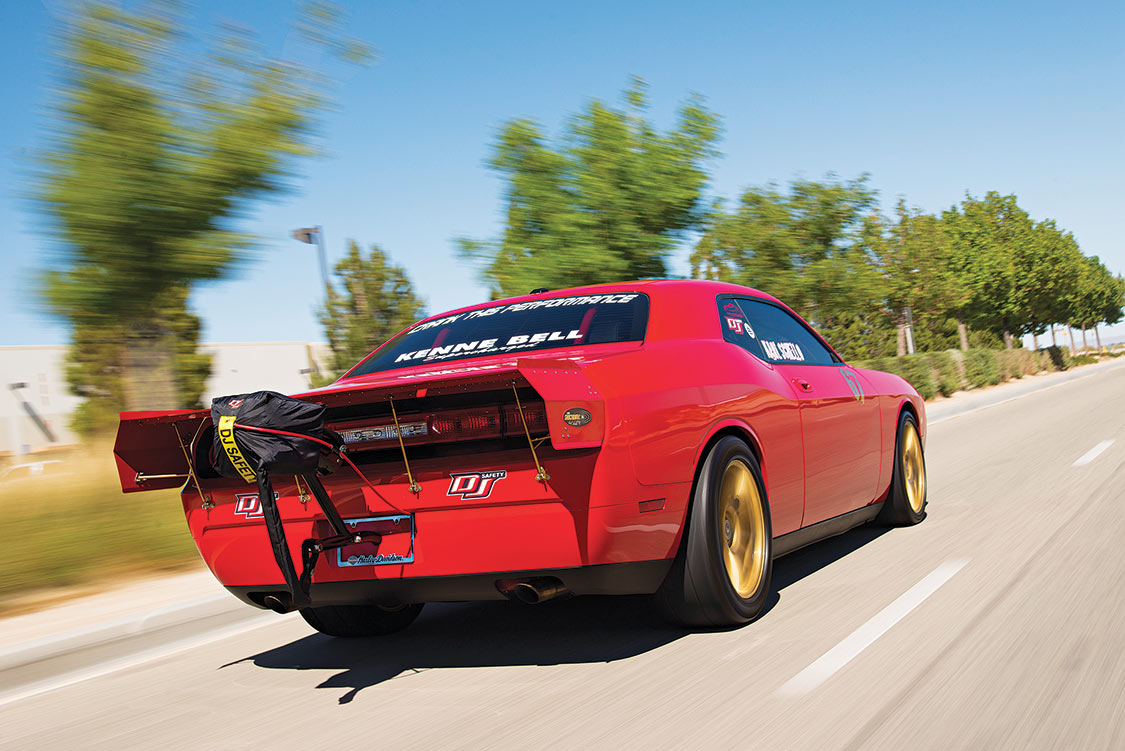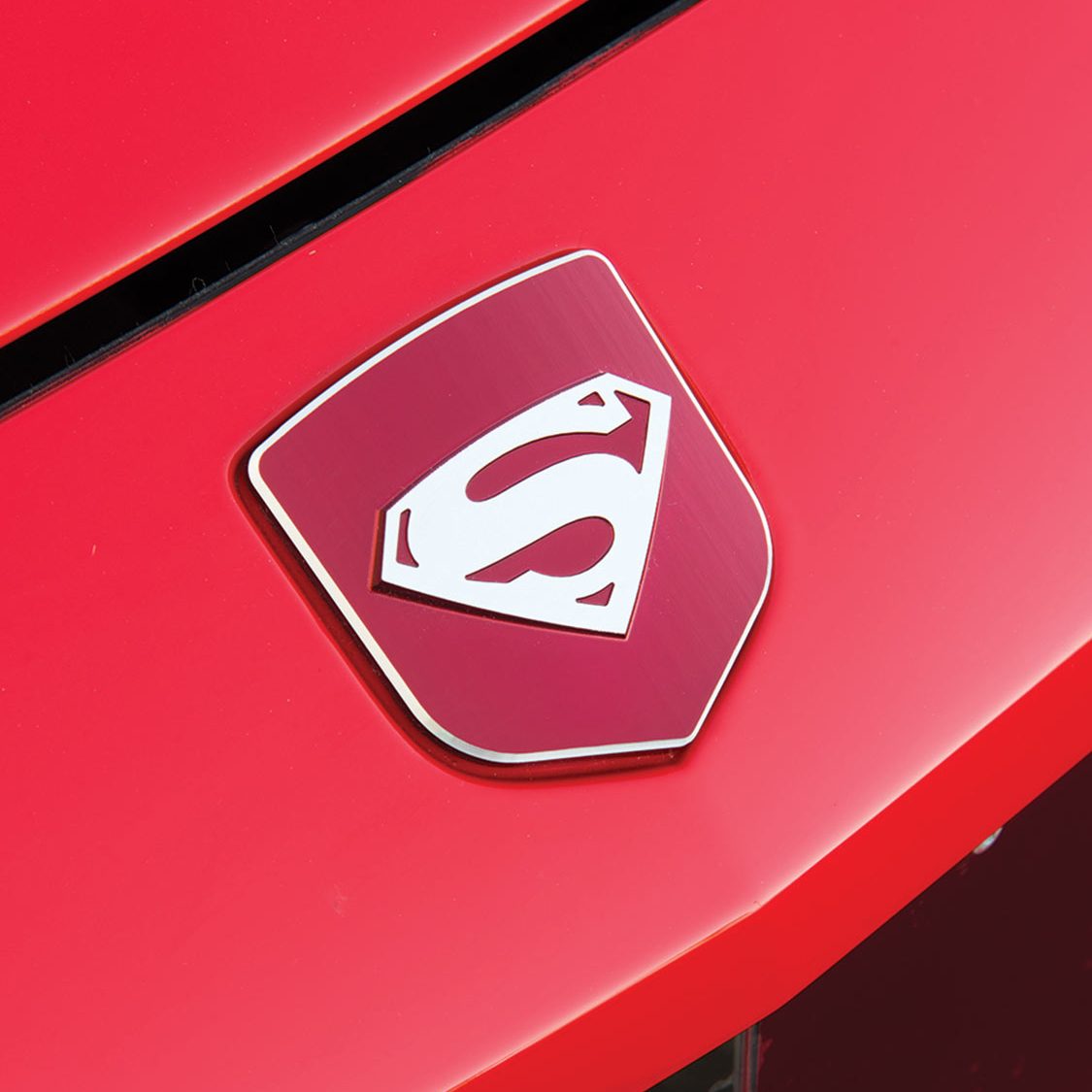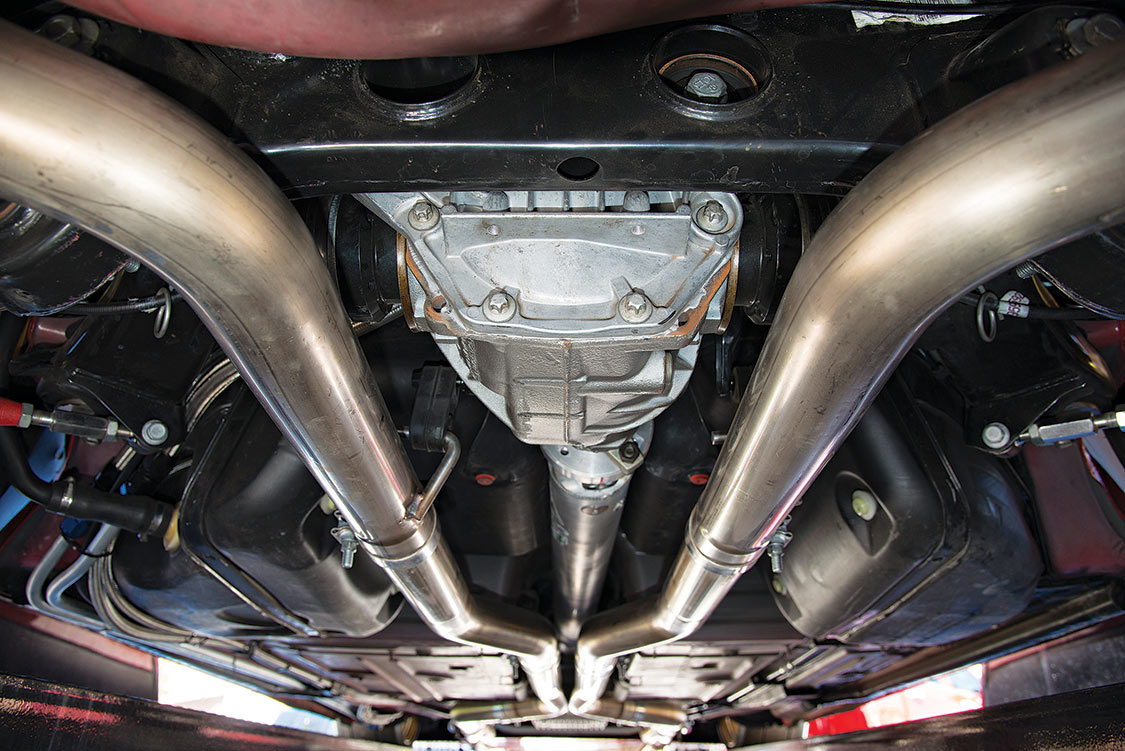 Lou Leto
.
June 22, 2022
.
All Feature Vehicles
Lou Leto
.
June 22, 2022
.
All Feature Vehicles

Let’s put it out there right now: Affable Karl Schello is no mellow fellow. He can’t be when setting a goal to gain a 200-mph hat, with the bragging rights to be the first modern Mopar pilot to break the magic 200 barrier in the standing mile. He’s earned that title and isn’t resting on his laurels. There are new goals that can only be accomplished through dedication, assembling a unique team of focused individuals, and the necessary investment of time and funds required to push the envelope while raising the bar for Mopar fans near and far. He also acknowledges the support of his wife Vani.
Where does Karl begin? “My first impression of cars was formulated by my Grandpa ‘Big John’ Broussard, in my birthplace of New Iberia, Louisiana,” Karl said. “He had a cool-looking ’53 Cadillac Coupe de Ville that he took me for rides in. Later, while still little, I would sneak into the seat of a ’69 Z/28 owned by my cousin and practice shifting.”



Karl and his family moved to California, and he was bit by the horsepower bug. He built a ’62 Nova hot rod as his first car, and followed it up with a ’65 Nova. He had his Tri-Five moment with a Handyman. Next, Karl jumped over to the custom car scene with a chopped-top ’63 Caddy project, and then moved on into lowriders.
With a focus on business and family, he took a voluntary break from playing with cars in 2002, until he spotted a new Challenger on the road. “I didn’t know what it was, but it said ‘Dodge’ on the back.” He went to the local dealer to learn more, a very greedy dealer who wanted to charge a substantial premium for the then hard-to-get cars. “He quoted $75,000, so I walked.” He found another dealer who allowed him to test drive an R/T edition, but he wasn’t completely impressed with the experience. “I could feel that it had potential. I ordered one in Tor Red and took delivery in January of 2009. It was my daily driver to my moving and storage company 65 miles away, just as I intended.” Taking advantage of the SRT Experience offered to all new owners, he drove at Willow Springs Raceway, and he was hooked. The double-down moment for the Dodge owner was when he learned his neighbor drove for NASA events, so Karl became a road racer, running stock with the exception of coil-overs and Nitto tires.
I basically blew the engine in the burnout box, bounced off the rev limiter, and the resultant internal damage was two destroyed valves and five broken pistons that wiped out the engine.



In 2010, he changed direction again. To get more power from the Mopar, he bolted on a Kenne Bell supercharger to his 100% stock engine, and a modified valve body in the automatic transmission. He kept dialing in blower boost until it was 16.5 pounds, enough to make his goal to crack into the 10-second category in the quarter-mile (a best of 10.8 E.T. at 128 mph).
Then he learned about the inaugural Mojave Mile event in 2010. He attacked the standing mile with the same 16.5-pound boost on the stock engine, but he did swap the rear tires to Nitto Drag Race 315x35x20s to go through at 183 mph. Karl named his car ShockWave.
Later, back to the dragstrip to become a better racer, “I basically blew the engine in the burnout box, bounced off the rev limiter, and the resultant internal damage was two destroyed valves and five broken pistons that wiped out the engine.”
Final time slip: 200 mph. schello said hello to bragging rights as the first 200-mph modern Mopar (March 2012).


The image of receiving a 200-mph hat became the all-in, singular focus. A new engine, a 393-ci Mopar motor built off of the 6.9L architecture, was the base. The compression was upped to 10:1. Innards included a Scat crankshaft, Crower billet rods, CP pistons, and back to Crower for the cam. A larger supercharger, a 4.2 from Kenne Bell, was the topper. Dyno pulls with 23 pounds of boost revealed 1,070 hp at the rear wheels, an estimated 1,270 at the crank. Karl felt he was ready, so he took the Challenger from his garage in Palmdale (California) to the Texas Mile event.
At these events, safety is paramount, with mandated safety passes at certain speed limits. “I attempted the first pass with their designated 145-165-mph range at the timed half-mile, and blew through at 165.3. They were going to ban me right then for excess, but I spoke honestly about not knowing the full power capability of my new setup. The officials relented, and in my second safety pass, to be in the 185-199 range, I registered 193.1 mph,” Karl said. “The next pass was approved at Unlimited, so I let her loose. With the big pulley on the supercharger, it was flying until fifth gear, and I felt it nose over, with no more pulling power.” The time slip read 199.2 mph. Diagnostics indicated that the ECM was going into limp mode. The typical racer story ensued of friends in faraway places with the proper but rare parts remedy, and the need for a seven-hour round trip to retrieve. Preparations for a final pass included borrowing rear tires, a swap with another helpful racer friend for increased diameter (taller tires) to assist the 3.06 rear gears. The drama continued during the end of the day, last pass. Pedal to the metal, Karl overshot the mile marker, downshifted at an rpm that “lifted the head gasket” to prevent running off the end of the course. Final time slip: 200 mph, and Schello said hello to bragging rights as the first 200-mph modern Mopar (March 2012).



Parts exchanged prior to the next event included new heads, with a dyno pull that took out another head gasket, just one week prior to the 2012 Mojave Mile. TCMs presented another challenge, with Karl and company going through five attempting to go over 6,500 rpm. The sixth rewarded them with a best run of 201.7 mph.
At the end of 2012, Karl decided upon a completely new direction: new engine builder Chris Seidle (Seidle Motorsports in Virginia); a new tuner, AJ Berge aka “Hemi Tuner” (from New York) and a new engineer/crew chief, Cam Chevrout (Crank This Performance in Riverside, California). “We decided upon a stout engine with a lot of one-off stuff,” Karl said. “That included choosing a 100% bare set of Gen 3 alloy head castings that were painstakingly worked over by Brian Mulhoney, with his own design for the chamber and valve angle, which would be capable of maximum flow and accepting high boost.” Karl admits, “I am a cylinder pressure guy,” evident by the 10:1 compression, and the 168x103mm throttle body that feeds a special Kenne Bell 4.7 twisted-vane Bigun supercharger that Karl claims “is a blower capable of nearly 35 pounds of boost, if necessary.” He can barely contain his enthusiasm as he states, “on the dyno at 19 pounds of boost with a 4-inch pulley, it showed 1,110 rwhp. I am really excited about the potential of this engine.”
Dodge fans, at closer inspection, will notice that the original front spoiler is eliminated, exchanged for an LP Racing spoiler that joins to a custom belly pan.



Sitting at rest in the pits, what does ShockWave look like? Basically an ’09 stock-bodied Dodge. The obvious is the purpose-built, Pro Stock-type aerodynamic rear wing/extension. Dodge fans, at closer inspection, will notice that the original front spoiler is eliminated, exchanged for an LP Racing (Ontario, California) spoiler that joins to a custom belly pan. There is a custom-built fiberglass hood. The facelift is enhanced by a Plexiglas panel that blocks the grille, which means there is no air flow during passes. A custom Jolvan three-row, dual-pass radiator; Evan waterless coolant and B&M coolers on all systems control cooling challenges. The pre-pass regimen also includes turning on two electric fans before each run and pouring ice into the trunk well-mounted, 13-gallon tank that pumps frigid water to the intercooler for the supercharger. The 19-inch wheels are custom powder-painted and built by Forgestar (nine wide in front, 11 in the rear). Tires, by Hoosier, are 265 35 (front), with a taller 315 40 size out back. Suspension is controlled by custom-built AGP double adjustable coil-overs. The rearend is still stock, with 3.06 gears.
The Challenger cockpit is not what one would expect in a race car.



The Challenger cockpit is not what one would expect in a race car. Looking past the full cage, the Corbeau seat and the missing passenger seat, the interior remains virtually stock, from the dash to the steering wheel. Even the console and door panels are intact. The factory floor mats and the rear seat are still there. “They call me ‘the safety Nazi.’ DJ Safety has always been a full supporter, supplying the five-point belts, fire suppression systems, engine and transmission diapers, HANS device, suit, shoes and helmet. The company even custom made the parachute, now necessary to quickly bring down the high speeds of a 4,600-pound car.
Creature comforts are intact. The headlights shine through the tinted Plexiglas grille panel, and the windows are power actuated. “The DVD player still works; I can watch movies in the pits,” Karl said excitedly. Perhaps his favorite film might be “Fast Five,” since the engine sounds for Vin Diesel’s car were dubbed from 12 hours of recordings of Karl’s Challenger. You might catch a glimpse of the red vehicle’s further Hollywood participation, appearing in the opening and closing scenes of “Fast 6” and “Born to Race.”



Karl admits to not being in the car since 2012, “We did two up-and-back, low-boost shakedowns on a back road prior to the April 2015 Mojave Magnum.” On the Mojave airport runway, his “test” run off the trailer during the Magnum was 203 on C16 fuel, “with the TCM causing the 1-4 shifts of the automatic transmission at 6,250, with fifth gear coming in at 5,650.”
His long-term goal? “With AJ building custom TCMs to allow 7,500 rpm, 225 has a nice ring to it.” In October, Karl and crew return to Mojave. Stay tuned for the next shockwave caused by his red rocket.

Share Link